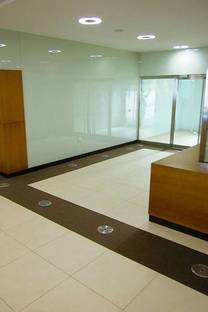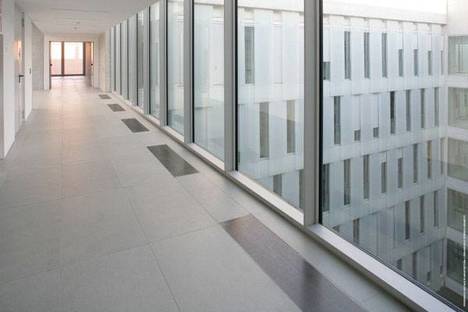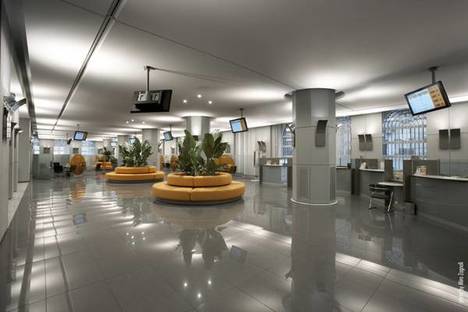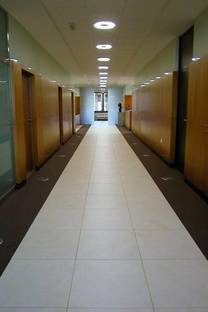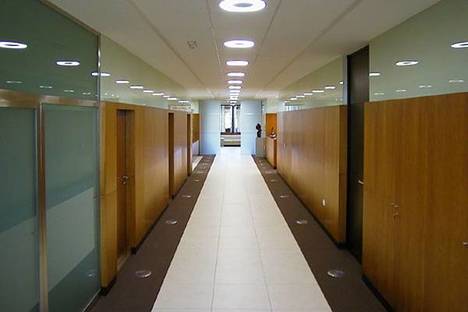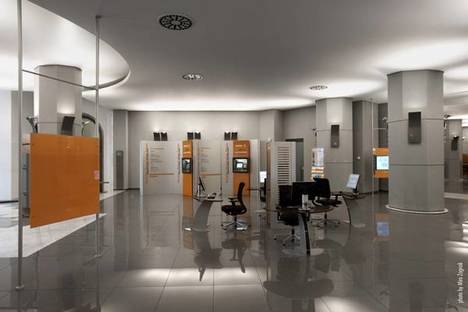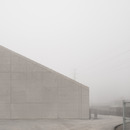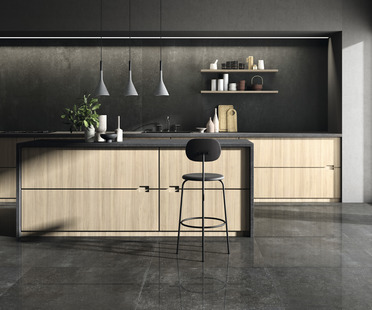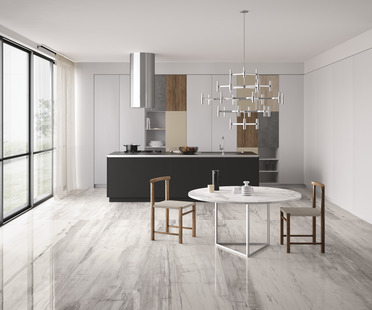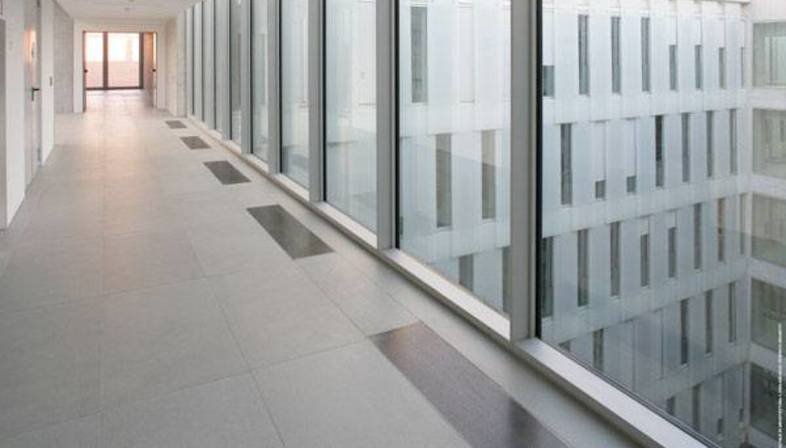 It is easier to lay ceramic tiles with a floating or raised floor: two words for the same architectural technique.
It is easier to lay ceramic tiles with a floating or raised floor: two words for the same architectural technique.Under the floor is an architectural space in which a lot of functions can be concealed: cables, pipes and other technical systems. Planning use of this space requires special skill and foresight, for the surface finish is only what is seen, while the truly complicated part is the hollow volume underneath filled with technical materials.
One answer to this complexity is a Granitech raised floor with a structure that separates it from the foundations below it to create an accessible empty volume in which to pass all the systems required by today’s high-technology living.
Granitech offers raised floors which are particularly flexible for rapid installation and maintenance.The floating floor is a true architectural system, useful for managing technical installations and ensuring rapid, effective maintenance with no need to break or waste materials. In addition, the visible part, the ceramic tiles, can easily be replaced or changed to update the look of the building’s interior in response to ever-changing tastes.
The raised floor fits into the architecture perfectly to become one with it, making it an essential aspect of managing space and an efficient technical facility even while highlighting the quality of the flooring materials. A solution of this kind is perfect for the contemporary idea that architecture should save energy, for the gap between the ground and the floor covering provides thermal insulation. All this efficacy is the result of a supporting structure of columns, crosspieces and seals, a system generating a mesh capable of supporting any load provided it is adequately designed.
A floating floor solution can be used in interiors or exteriors to meet a variety of requirements, for this type of flooring does not suffer from infiltrations, waterproofing the part underneath, or from temperature excursions, as the structure can withstand any climatic conditions.
An additional degree of compositional freedom is ensured by the modular freedom of raised floors, going beyond the standard 60X60 size to include new sizes of ceramic panels such as 120X60 or 60X40. What may have looked in the past like a superstructure added to pure architecture has now become an integral part of it, demonstrating that the construction process involves designing a space to ensure perfect technical efficacy without neglecting appearance.
Contact for informations: www.granitech.com










